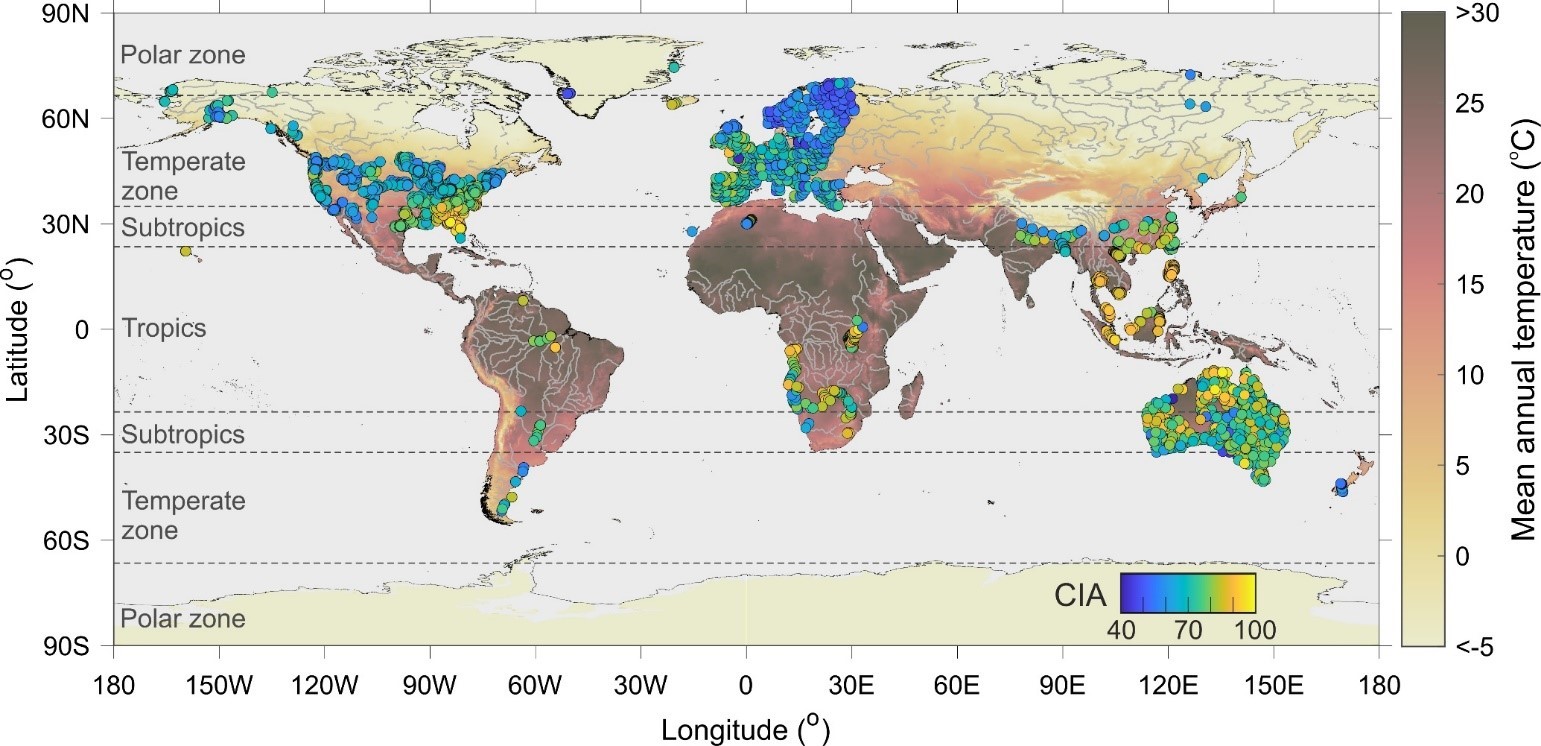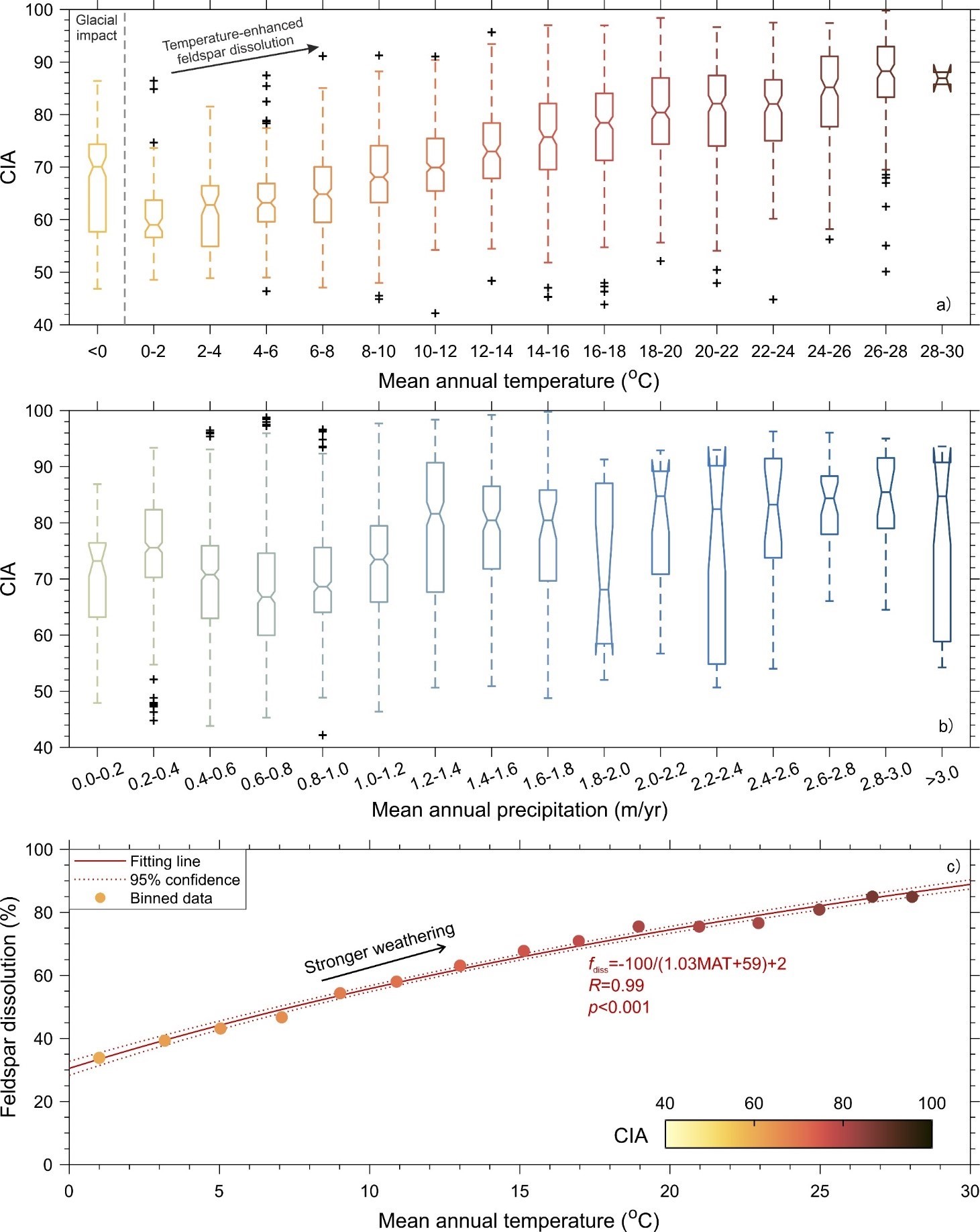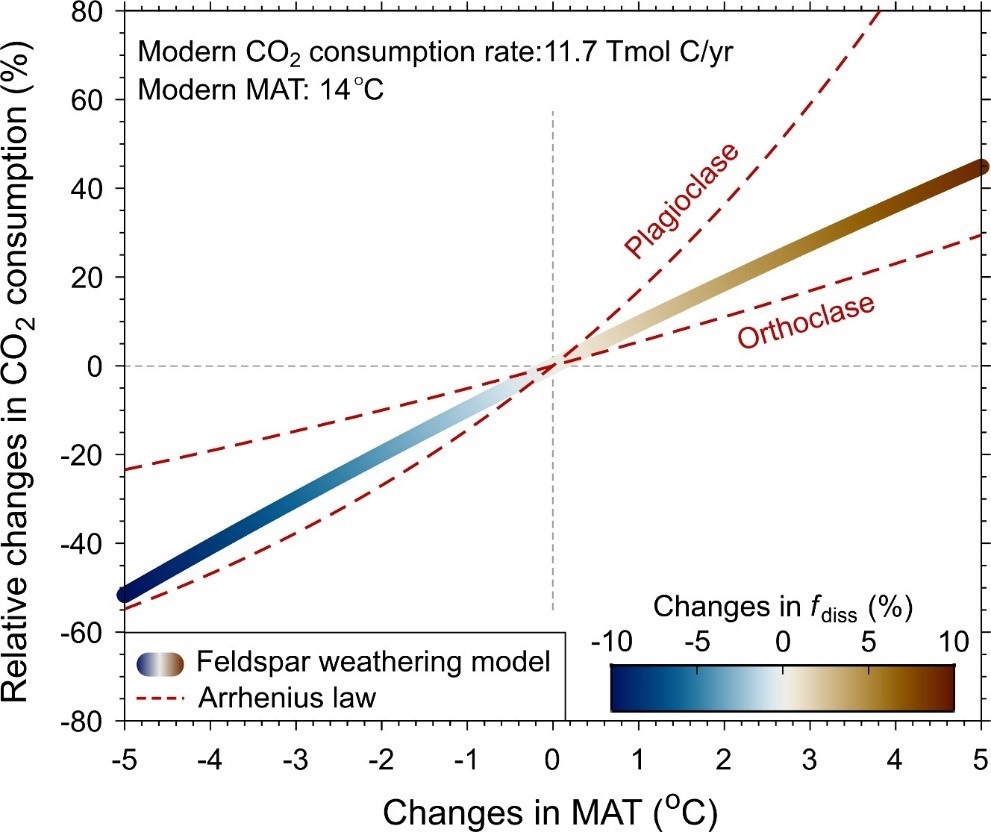Recently, Dr. DENG Kai from the State Key Laboratory of Marine Geology of Tongji University published, jointly with his collaborators, a paper on their latest research entitled "a global temperature control of silicate weathering intensity" online in Nature Communications. According to the research, the temperature is the main factor controlling the weathering of silicate minerals on a global scale, and the negative feedback between climate and weathering may be strengthened under the Cenozoic global cooling. The research findings provide an insight to deep paleotemperature reconstruction and carbon cycle simulation.
The chemical weathering process of silicate minerals can remove CO2 from the atmosphere and maintain the long-term habitability of the earth's climate through negative feedback. A key factor lies in the response intensity of silicate weathering process to surface temperature. Although the temperature effect of silicate weathering has been observed in laboratory experiments and explored in small ranges, it is often masked by other factors on a larger spatio-temporal scale. Subsequent studies have gradually turned to other driving forces to explain climate weathering feedback, including hydrological regulation and tectonic uplift. Therefore, how the silicate weathering process responds to and regulates the climate, and how the climate weathering feedback intensity changes in geological history have remained hot topics in carbon cycle and supergene geochemistry.
In view of this classical issue, the researchers collect the element data of global river fine-grained sediments (n = 3828) to calculate the silicate weathering index - chemical index of alteration (CIA), and extract the environmental factors such as climate, lithology, landform and vegetation of the corresponding watershed for comparison, to analyze the main controlling factors of silicate weathering and its geological significances.

Fig. 1 Geographic locations of compiled weathering index data in fine-grained sediments. The symbol color indicates the value of the chemical index of alteration (CIA; n = 3828). Data source of CIA is described in Methods. A sub-sample set (n = 2989) collected from small- and median-sized catchments was used for geospatial analysis and discussion on environmental controls (Methods). The global map of mean annual temperature is shown for comparison. At first glance, high CIA values (yellow symbols) are in general limited to the tropics and subtropics.
It is found that on the continental scale, the weathering of silicate minerals is mainly controlled by the surface temperature, while the control of precipitation, terrain lithology and other parameters is only limited to the regional scale. In addition, temperature has a nonlinear control effect on one of the main processes of silicate weathering, namely the hydrolysis of feldspar minerals (constrained by CIA): with the increase of temperature, the response of feldspar hydrolysis process to temperature decreases gradually. The research infers that this phenomenon is caused by the transformation of weathering mineral types: on a global scale, with the increase of temperature, chemically reactive plagioclase is rapidly depleted, while orthoclase with lower dissolution rate constant gradually becomes the main weathering mineral.

Fig. 2 Control of temperature versus precipitation on CIA. a, b Boxplots of CIA grouped by zones of MAT (a, interval of 2 °C) and MAP (b, interval of 0.2 m/yr). The notch of each box displays the variability of the median: if the notches of both boxes do not overlap, their medians are significantly different at the 5% level. The box limits are 25th and 75th percentiles, the whiskers represent the 1.5× interquartile range, and the “+” symbols are outliers. CIA increases monotonically with MAT and shows a more complicated pattern with MAP. The patterns of WIP (Supplementary Fig. 3) are similar to those of CIA shown here. c Empirical relationship between MAT and percentage of feldspar dissolved (fdiss, %) converted from average sediment CIA (Methods) binned by temperature (an interval of 2 °C, MAT >0 °C, Supplementary Fig. 6). The non-negligible fdiss under low MAT (~0 °C) might be partly contributed by sedimentary rock outcrops that have been weathered before exposure. However, the impact of such fdiss baseline in a specific region can be largely reduced when calculating relative changes of fdiss with MAT.
The internal relationship between surface temperature and silicate weathering is of geological significance. On the one hand, based on a large number of data, this research puts forward the empirical relationship between sediment silicate weathering index and surface temperature, making it feasible to reconstruct the paleotemperature change in climate cold / warm events in geological history. More importantly, the nonlinear response of feldspar minerals weathering process to temperature change on a large scale implies that the weathering or weathering feedback intensity of the surface may also change in geological history: when the earth's climate turns cold, the climate weathering feedback may be strengthened. In other words, under the general pattern of global cooling in Cenozoic, the weathering of the surface may gradually increase. Accordingly, the silicate weathering process will be more likely to maintain climate stability on a million-year scale.

Fig. 3 Response of modeled silicate weathering-driven CO2 consumption to changes in MAT. The modeled link is derived from the feldspar weathering model based on MAT-fdiss equation in Fig. 4c. The changes in both MAT and CO2 consumption are relative to the modern conditions. Note that changes in CO2 consumption here are estimated from Ca, Na, and K only (mobile elements in feldspar) without Mg, and thus represent a conservative estimate. First-order estimates on the temperature dependence of weathering reactions by the Arrhenius law are shown for comparison. The range of activation energy used is 36 kJ/mol (orthoclase) to 107 kJ/mol (plagioclase)70. Details on the feldspar weathering model are described in Methods.
Dr. DENG Kai is the first author and corresponding author of the paper, and Professor YANG Shouye of the School of Marine and Earth Sciences of our university is the co-corresponding author. Other authors are Dr. GUO Yulong from the State Key Laboratory of Marine Geology of Tongji University. The research was supported by the National Natural Science Foundation of China.
Link to paper: https://rdcu.be/cKDwi
Source: https://news.tongji.edu.cn/info/1003/80531.htm